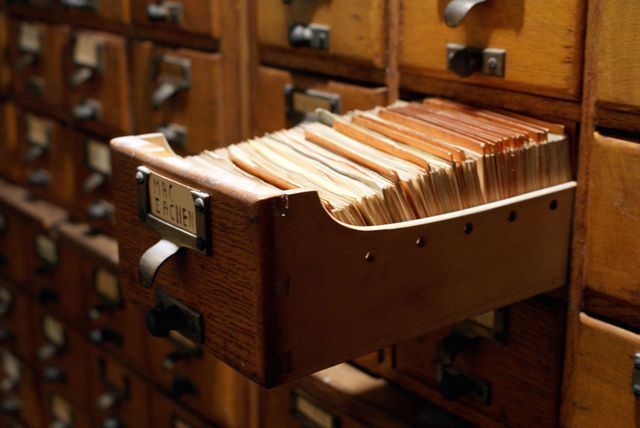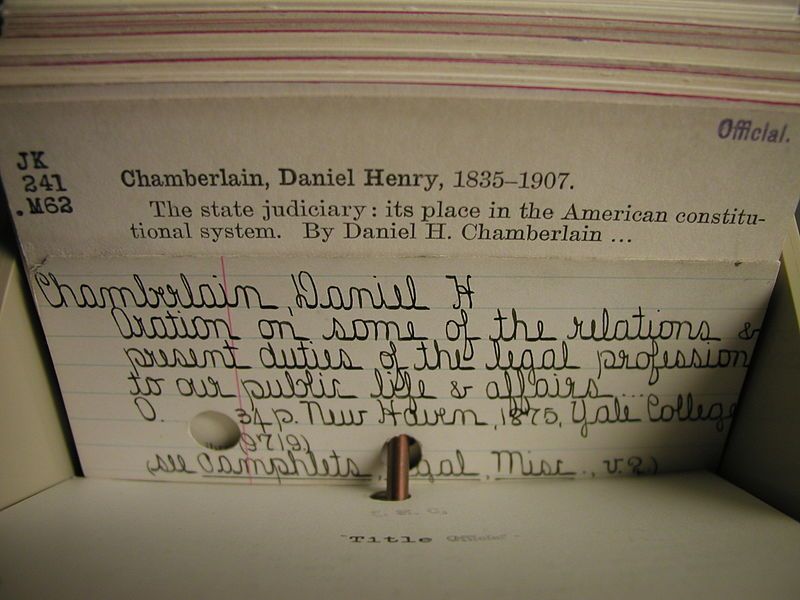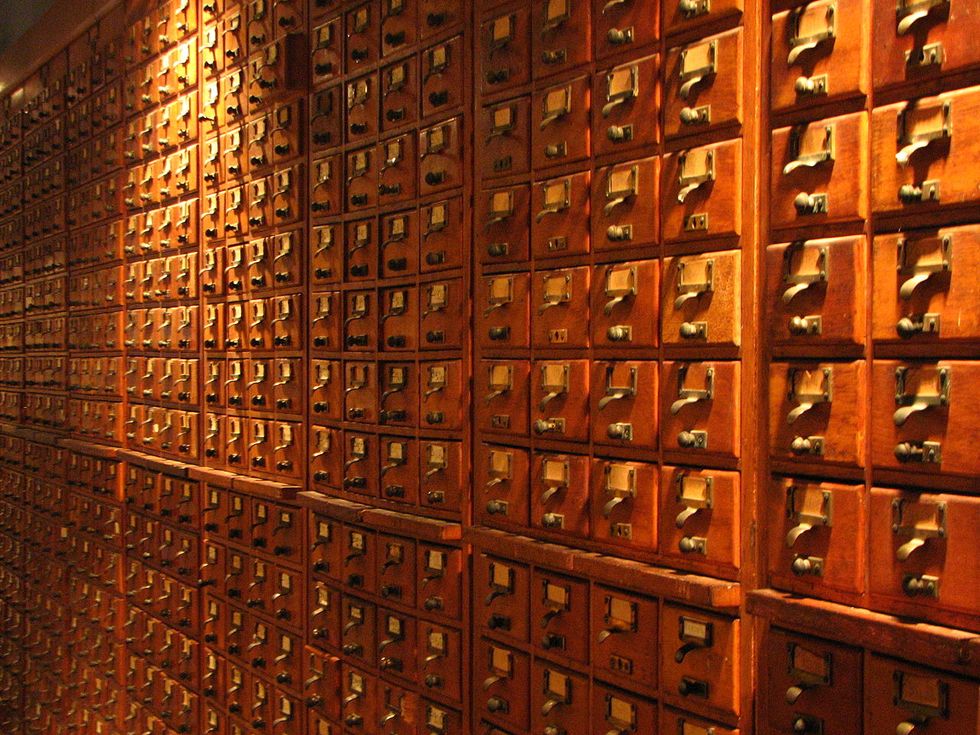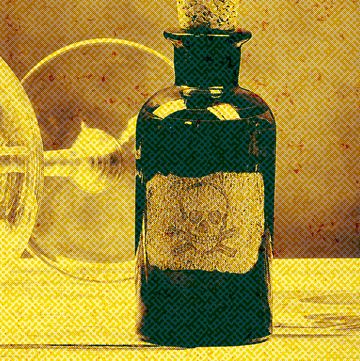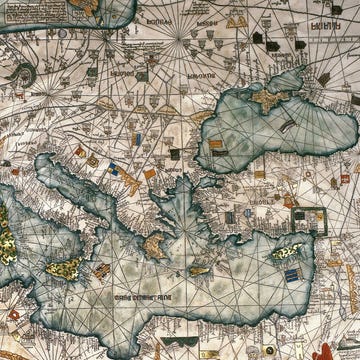Index cards are mostly obsolete nowadays. We use them to create flash cards, write recipes, and occasionally fold them up into cool paper airplanes. But their original purpose was nothing less than organizing and classifying every known animal, plant, and mineral in the world. Later, they formed the backbone of the library system, allowing us to index vast sums of information and inadvertently creating many of the underlying ideas that allowed the Internet to flourish.
The Invention
Organizing more than 12,000 animals, plants, and minerals is painstaking work. Imagine having to do it by hand, let alone typing it all into Microsoft Excel.
That's what Carl Linnaeus, the father of modern taxonomy, did for his book Systema Naturae. Published in 13 editions from 1735 to 1770, Systema Naturae classified and named organisms and minerals. It gave scientists an understanding of which species were alike based on the number of shared categories.
Before publishing his taxonomies, Linnaeus had to organize everything himself. But instead of writing his classifications in a book that could easily run out of space, he put each organism and mineral on its own piece of paper. That way, Linnaeus could have a file of everything he recorded. He could easily retrieve data on any organism and mineral and reposition any of them that may have been placed in the wrong spot. Most importantly, new discoveries could always be added as he published new editions of Systema Naturae.
But about 30 years after publishing the first Systema Naturae, Linnaeus came up withanother way to index his information: by putting all of the organisms and minerals on smaller, thicker pieces of paper. Similar in size to a playing card, this new tool would be used for one thing—classifying, or indexing, information.
How Dewey Did It
For thousands of years, if you wanted to find the best and most comprehensive information about anything, you headed to a library. You just had to check two things first: whether the library had the information you're looking for, and, if so, where to find it. These days we can get this information from our computers in seconds, but as recently as the 1990s, online catalogs were new and mostly unavailable, and that meant combing through the card catalog to track down a book.
Before libraries used cards, the catalogs were written in books, as if part of the collection. Preceding catalog books were etched tablets, which were used in ancient Babylon and Egypt. As time went on and collections grew, tablets and eventually the catalog books ran out of space for new entries. They became cumbersome to rewrite. So in 1791—about 30 years after Linnaeus' invention—librarians began resorting to cards for their catalogs. The movement started in France during the French Revolution. As revolution raged in the streets, an evolution in library cataloging was also underway.
The French libraries initially used playing cards. But by the nineteenth century, libraries in the United States and Europe began using index cards. Either way, the transition to cards made the indexing of collections much easier. For each book the library acquired, a new card simply could be added to the catalog.
The listings on these cards were bibliographical, with vital information like author name and title. They also contained the book's approximate location, like a particular shelf. But not every library organized its books and cards the same way—some organized them based on thesize of the book, while others, like the Amherst College library described in Colin B. Burke's Information and Intrigue, organized books and cards based on author name. In both cases, the range of books on a shelf was random. If you browsed through the library, you would find a novel next to a geometry book.
And then came Dewey.
Melvil Dewey was working at Amherst in the 1870s, and wanted to reorganize the library. In 1873, he came up with what we know as the Dewey Decimal System. It organized the books by subject, meaning that all geometry books would be together, while classical Greek speeches would be in a different section. Each book was assigned a unique number—a "call number"—that identified the book's subject and exact location. Decimal points divided different sections of the call number. The call number on the card matched a number written on the spine of each book.
This system caught on nationwide in the 1880s and is still used today. If you're old enough, you probably remember learning the Dewey Decimal System in school. Dewey's system organized the cards in cabinet drawers by subject, author name and title, which meant that one book had multiple cards. The index cards also contained brief descriptions of the books.
Librarians originally handwrote the bibliographies on each card. But in 1971, the Ohio College Library Center began printing the text onto the index cards for them. The OCLC distributed about1.9 billion cards before shutting the service down in 2015—with today's online catalogs, there was little need to make more cards. The last order was placed by Concordia College in Bronxville, N.Y. as a backup to its own online catalog.
Cataloging Everything Ever Published
Dewey's wasn't the only index card-based classification system over the years. The Library of Congress has its own letter-based system. The number-based Universal Decimal Classification, created by Paul Otlet at the turn of the nineteenth century, is a more detailed version of Dewey's system. It had to be, considering it was created to catalog everything ever published.
Long before the verb "to google," Otlet and his friend Henri La Fontaine set out to develop their own search engine in Brussels in 1895. They wanted to create the go-to place for everyone to find information on absolutely anything. It would work just like Google does today—you submit a query and get links to relevant sources of information. In the 1895 version, you'd send queries by mail or telegraph and get index cards with bibliographies in return.
The Belgian government provided Otlet and La Fontaine with funds and a building to get started. They had to create a database of all the bibliographies themselves. To do so, Otlet and La Fontaine collected as much data as possible on every book, article, and photograph ever published. They also searched for items that libraries didn't have, like pamphlets and posters. Using Otlet's Universal Decimal Classification, the two men and their staff created an index card catalog with bibliographies on every card. The cards were organized by author name and subject. The subject cards contained descriptions of the item in addition to the bibliographies, often requiring multiple cards. Each item usually had one card in the author cabinets.
The search engine service, called the Mundaneum, was a business. When you submitted a query, the bibliographies and descriptions were copied from the Mundaneum's cards onto new cards. The new cards were then sent to you, as long as you paid a fee per card.
The Mundaneum had a catalog of about18 million index cards, which took 15,000 drawers to hold. This became overwhelming by the 1930s, just before the Mundaneum's decline. The Belgian government stopped supporting the enterprise in 1934, and Otlet had to move the Mundaneum to a smaller building. Unable to meet its costs, it closed shortly thereafter. Most of the cards were destroyed in a Nazi invasion in 1940, and cabinets that once aligned the walls were replaced with artwork.
As the Mundaneum entered its final stages, Otlet began to realize that the use of index cards would eventually be impractical. It was an endless project—new published materials required more cards and more space. In his 1935 book Monde, he explained his belief that all information would one day be digitized, so that we could see it on a screen at home. Inspired by inventions like telephones and televisions, Otlet had predicted the existence of the Internet.
The Mundaneum went through a couple of name changes over its 40-year life: it was originally called the International Institute of Bibliography. It was then renamed the Universal Bibliographic Repertory before being dubbed the Mundaneum. Remnants of its card catalog still exist today at theMundaneum museum in Mons, Belgium.
The Index Card's Legacy
Otlet's idea of a digitized version of information wasn't just a prediction. It was a dream. He and La Fontaine aimed to connect everyone around the world through knowledge. Had he lived until 1989—he would have 121 years old by then—he would've witnessed the invention of the World Wide Web.
But Otlet was one of the more unnoticed figures among the Internet's creators. Vannevar Bush, an engineer, is credited with having the most direct influence on the structure of the Internet. Like Otlet, Bush had also predicted a network connected by hyperlinks in his 1945 essay "As We May Think."
Yet without the Mundaneum—and without Linnaeus' invention of index cards or Dewey's library cataloging revolution—many of the basic concepts that underpin the Internet may have taken years longer to put together. It's amazing how much the information revolution we're still living in can be traced back to a simple 3" x 5" piece of card stock.
Jonathan works in New York and still often stops to marvel at the skyscrapers, where he finds inspiration for his writing. He's previously written for Newsday and Smithsonian Magazine.
